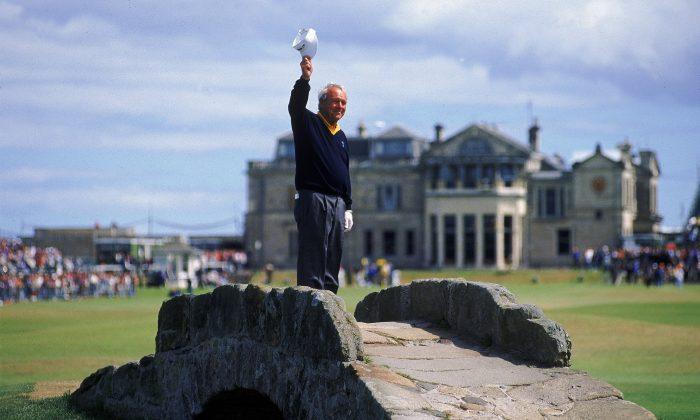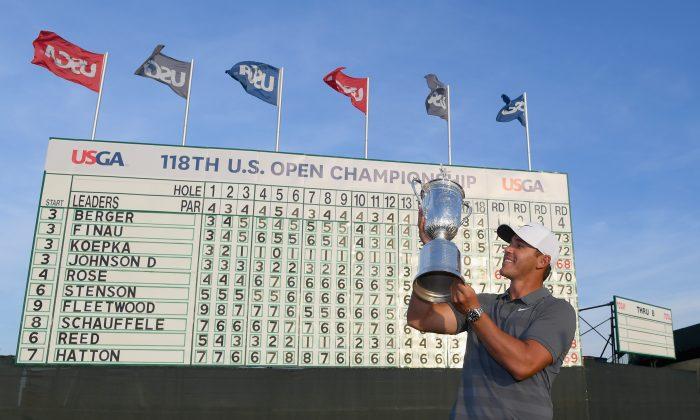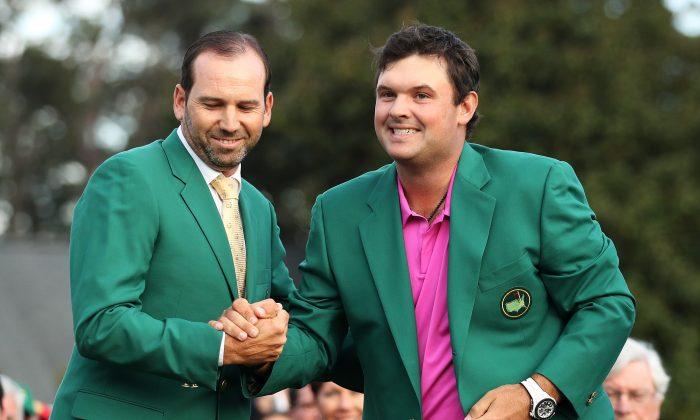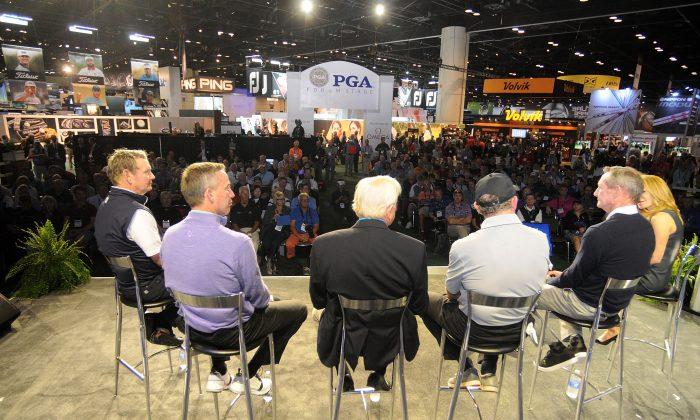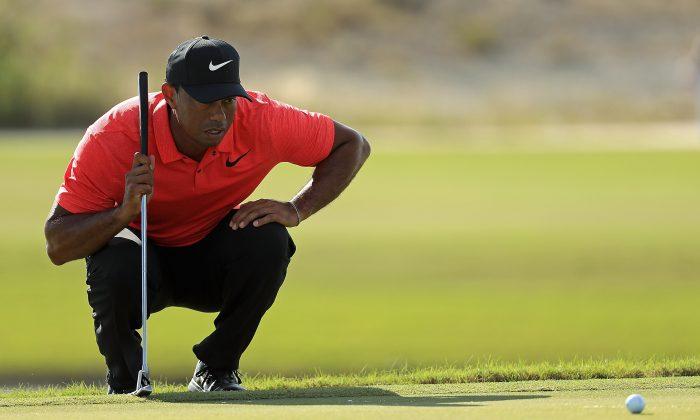CHASKA, MN—On the eve of the commencement of play for the 41st Ryder Cup Matches the passing of Arnold Palmer clearly has impacted the golf and sports world. The reach of Arnold Palmer was significant in a number of ways but there are four key areas in which Arnie’s contributions will forever be remembered.
* RE-ESTABLISHING “THE OPEN” AS A WORLD CLASS EVENT *
When Palmer competed in the 100th anniversary of The Open at The Old Course at St. Andrews, the event was more about the past than anything close to a bright future. Top American professionals did not make the trek “across the pond” simply because one’s expenses were often more than what any prize amount they could earn when competing.
At the urging of his manager Mark McCormack, Palmer played in the event after capturing the first two major championships of the year -- The Masters in Augusta and the U.S. Open at Cherry Hills where Arnold fired a final round 65 to win America’s national championship. For Palmer, the thought of achieving a modern “grand slam” was his goal -- winning The Open would be the 3rd leg of such a goal with the PGA Championship to follow.

Amazingly, in 1959 there were no Americans in the field. The winner’s purse was $1,250 compared to the sum for winning the U.S. Open at $14,400. Ben Hogan had won the event in his only attempt in 1953 but The Open was viewed as more of a local British event than the one that would flourish after Palmer’s participation.
In 1961 and 1962 Palmer would win the event in successive years -- the ‘62 triumph had him set the new championship four round total of 276 for 72 holes.
Palmer relished the vagaries of the unpredictable weather and bounces that came in playing links golf. For Arnie, the challenge was to show his game could handle and overcome all such impediments.
Palmer showed other Americans that being deemed a “world class golfer” meant being able to demonstrate the capacity to play beyond the USA. In the years that followed other notable American golfers such as Jack Nicklaus, Lee Trevino, Tom Watson and Tiger Woods would carry forge ahead on the path Palmer forged.
* THE MASTERS AND THE ASCENDING ROLE OF TELEVISION *
When The Masters started in 1934, it was not even called The Masters. The event crawled along in the early years and, although it always had a stellar field, the activities in Augusta were limited simply because modern television was still not present.
The first national telecast took place in 1956 with CBS doing the broadcast and featuring Chris Schenkel and Bud Palmer handling the microphones. Only four holes were covered -- #15 thru #18 -- and all had stationary cameras.
In 1958 Palmer won the first of his four green jackets. One year later Frank Chirkinian would produce the first of many Masters telecasts for CBS and it was through Chirkinian’s efforts that both the beauty of Augusta National Golf Club and the swash-buckling golf style of Arnold Palmer were linked.
Even when Palmer lost in a tragic manner -- double-bogeying the final hole in 1961 and losing by one stroke to Gary Player -- he endeared himself even more so to fans throughout golf. The following Palmer created at Augusta was forever known as Arnie’s Army.
During those early years of CBS coverage of The Masters had the benefit in being played in the spring heralding the new golf season as well as having three world class players in Palmer, Nicklaus and Player -- battling for green jackets each April.
The timing of television’s increasing reach in conjunction with the manner Palmer played made for fascinating viewing for lovers of the game throughout the world.
* THE MARKETING OF ARNOLD PALMER *

Long before Palmer came onto the scene athletes in different sports were often linked to various products of all types for consumers to buy. The belief was that “celebrity” endorsements would drive sales as people wished to emulate the athletes they followed in all ways.
Palmer’s style of golf, his good looks and his charismatic competitive style were all elements that pushed him forward. Adroitly managed by Mark McCormack -- it was the wherewithal to create a ubiquitous presence in a wide range of products that elevated the “brand” name of Palmer to all areas of modern life. The ascension of television was the critical amplifier in being able to create ripples of awareness that went far beyond what any other athlete had ever been able to accomplish.
The Palmer brand encompassed a slew of different products and with each one pressing ahead the name recognition of Arnie went far beyond the golf course. Even years later, long after his competitive days were over, the Palmer name still carried weight with advertisers. Palmer’s off-course income still had him near the top of all other golfers who were still active in the tournament scene.
As Palmer came of age on the golf course so did an emerging American consumer -- one with an unquenchable thirst for idolizing athletes and the means -- via television - to constantly stay in touch with their various activities.
It’s been said many times -- that for each dollar earned by golfers today -- Palmer should have received no less than 20-25% for the road he, along with McCormick, created for others to follow.
* OPENING GOLF AS GAME OF THE MASSES *
Prior to the emergence of Arnold Palmer -- golf was a game for those with money and the time to play. The country club scene was one of exclusion -- not inclusion. As America moved away from World War II the growth and buying power of an emerging middle class was taking hold.
Palmer showed how golf could be a game of a lifetime and for all income groups. As the son of a head golf professional and superintendent from Latrobe, PA -- Palmer displayed a style that bespoke to the common man and woman.
The boom of golf course construction during the 1960’s signaled a desire to create facilities open to the general public -- providing many of the same comforts private clubs had always enjoyed.
Palmer’s style of play -- always looking to attack the course with bold strokes -- was endearing to the growth of this new and powerful American middle class. Leisure time became more elastic and many sought golf as game for sport and networking with friends and business acquaintances.
Palmer also played a direct role in creating courses to play -- over 300 were built. Although not formally an architect -- Palmer hired those who were and in providing his name he created a demand from golfers to play the courses he designed. Arnie’s involvement would spur his on-course rivals Nicklaus and Player to do likewise. The sum total was a golf product in all corners of the globe.
In sum -- Palmer made golf “cool” for those to play. Arnie turned the page from golf being only for the elites to a game enjoyed by the masses. In retrospect -- this may be Palmer’s most significant contribution.
M. James Ward, a member of Golf Writer’s Association of America (GWAA) and past member of Met Golf Writer’s Association (MGWA), has reported on golf’s grandest events since 1980 in a variety of forums.
